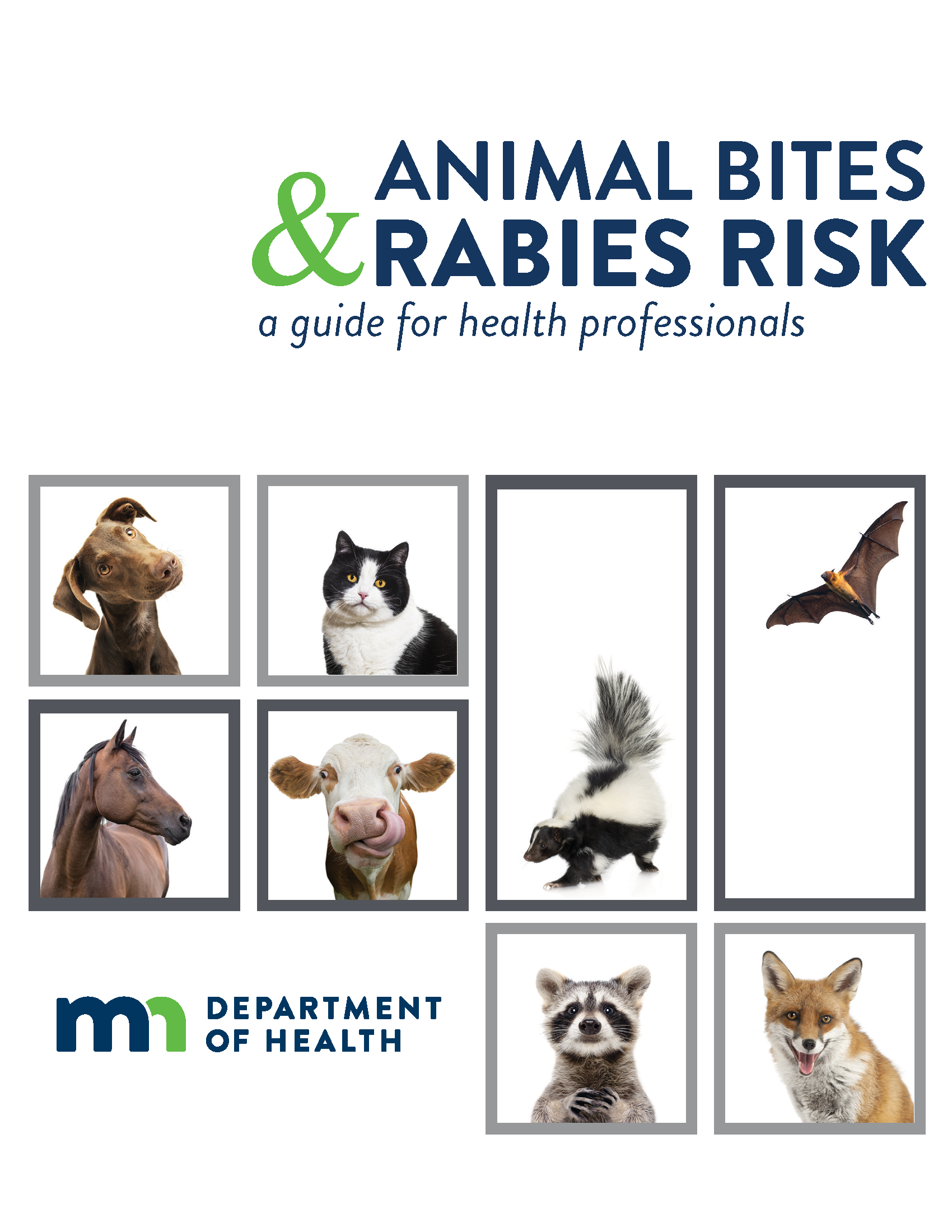Rabies Risk
- Rabies Information for Health Professionals: Rabies Risk Home
- Bites to Humans
- Human-Bat Encounters
- Post-Exposure Prophylaxis Regimen
- Pre-Exposure Prophylaxis Regimen
- Animals Exposed to a Rabid Animal
- Rabies Testing
- Minnesota's Rabies Rules
- References
- Frequently Asked Questions
- Contact Us
Related Topics
Contact Info
Rabies Information for Health Professionals
Reporting Rabies (animal and human cases and suspects)
Health care providers and clinical laboratories are required to report cases and suspect cases of rabies in an animal or human to MDH immediately 24 hours a day, seven days a week. Physicians and veterinarians may obtain information on rabies, including human exposure, prophylaxis, and bite management by calling 651-201-5414.

- Animal Bites and Rabies Risk: A Guide for Health Professionals (PDF)
This PDF file is the entire animal bites book, formatted for print.
Updated 1/2025, submission form modified 9/2025
Introduction
Rabies is a fatal neurologic illness transmitted to people by direct contact with the saliva of a rabid animal, normally through a bite. However, transmission through saliva or cerebral spinal fluid (CSF) contact with mucous membranes or a fresh wound or scratch is possible. The virus cannot penetrate intact skin. Rabies virus is inactivated rapidly by ultraviolet light or desiccation and does not persist in the environment; therefore, contact with the environment around a rabid animal such as bedding, or water bowls does not present a risk.
In Minnesota, rabies is found mainly in skunks and bats. Livestock and pets generally develop the disease following a bite from a rabid skunk. People are generally exposed to rabies by bats, livestock,and unvaccinated pets. Bites from wild carnivores and large rodents such as muskrats, groundhogs, and beavers are also of concern (see: Table 1: Human Rabies Risk Evaluation: Species of the Biting Animal (PDF) for species of concern). Species that are not a rabies risk in Minnesota include mice, hamsters, guinea pigs, gerbils, squirrels, chipmunks, rats, voles, and rabbits.
For more general information and current statistics on rabies in Minnesota see: Rabies.
- Management of Animal Bites to Humans
Consultations on animal bites and rabies risk, evaluation of the patient following animal bites, assessment of the need for rabies post-exposure prophylaxis, factors to consider when determining need for PEP. - Management of Human-Bat Encounters
Bat encounters and bat bites, when a bat should be submitted for rabies testing, how to capture a bat and submit it for testing, assessment of the need for rabies PEP following a bat encounter. - Rabies Post-Exposure Prophylaxis (PEP) Regimen and Wound Care
Wound care, Rabies PEP overview, human rabies immune globulin (HRIG), rabies vaccine, deviations from recommended PEP vaccination schedule, human rabies biologics, adverse reactions. - Rabies Pre-Exposure Prophylaxis Regimen (PrEV)
Who should receive rabies pre-exposure prophylaxis, pre-exposure rabies vaccination series, antibody titers and booster vaccination, laboratories offering RFFIT rabies antibody titer testing. - Management of Animals Exposed to a Rabid Animal
What to do when an animal is exposed to another animal. - Rabies Testing
Guidelines for submitting suspect animals for rabies testing, laboratory testing, result reporting, result follow-up, rabies testing in humans.